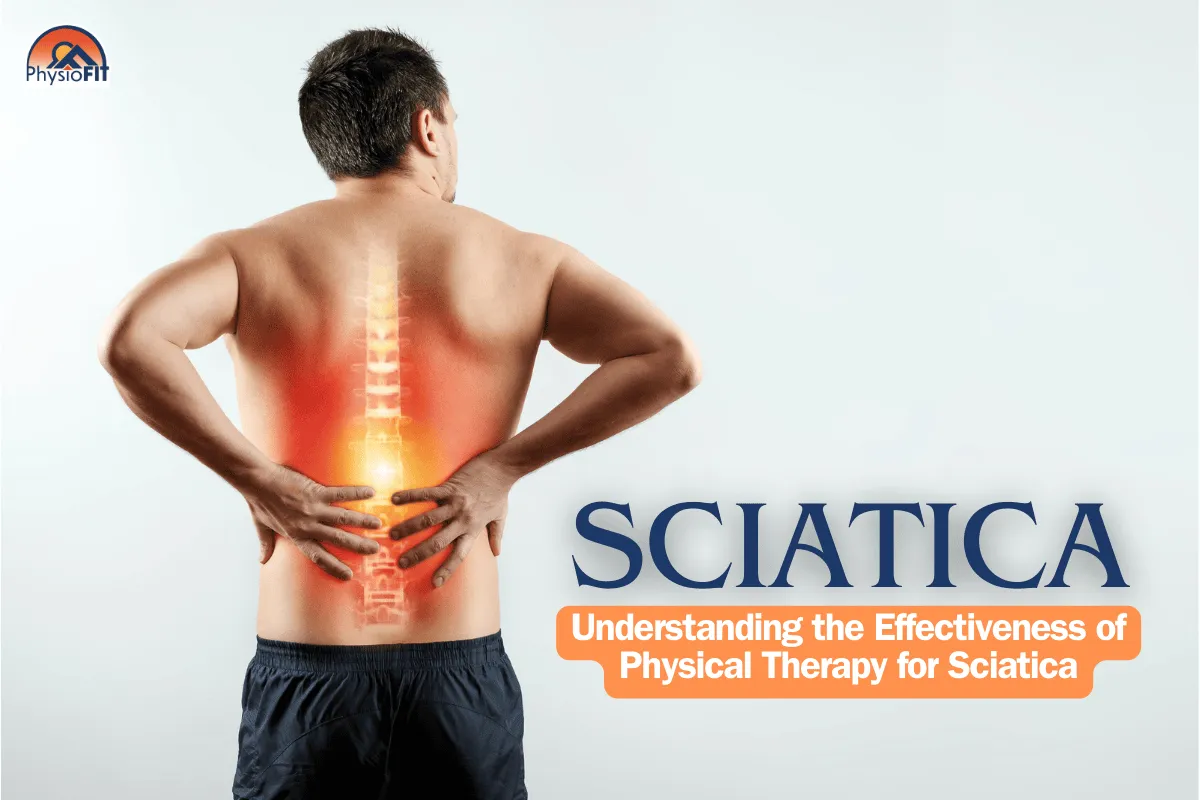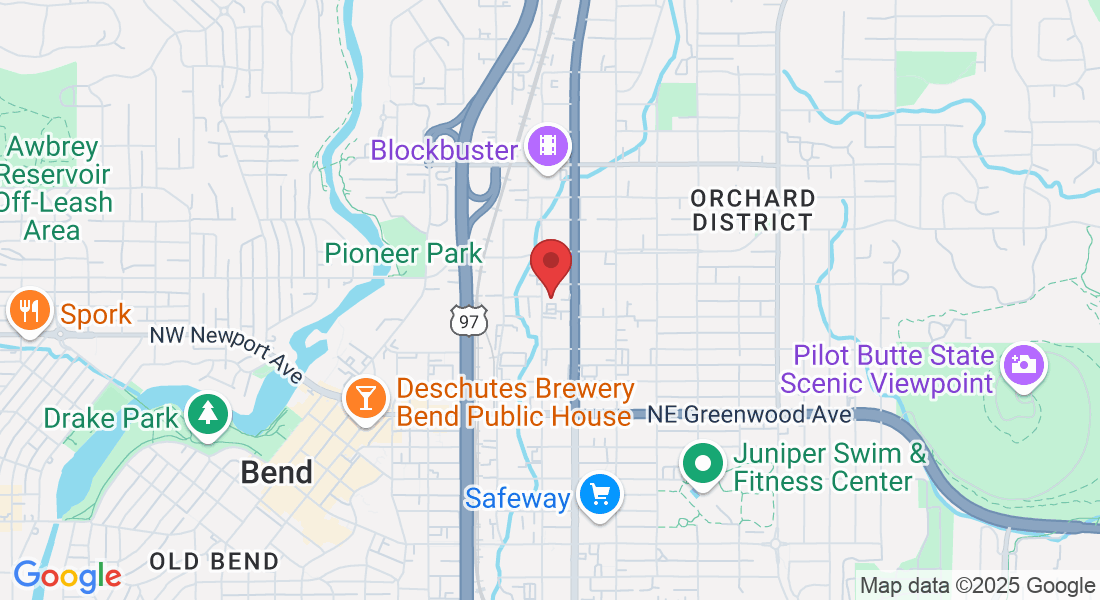Your Source for All Things Physical Therapy in Bend Oregon
The PhysioBLOG
Here, we share informative articles and insights that aim to help you achieve your full potential through our fitness-focused approach to rehabilitation. Our team is dedicated to providing you with valuable tips and techniques that can help you overcome any obstacle, whether you're recovering from an injury, surgery, or striving to build strength and wellness for life.
Stay up-to-date with our latest posts & empower yourself with elegantly simple techniques for optimal health & wellness.

Can Physical Therapy Help Sciatica: Understanding the Effectiveness of Physical Therapy for Sciatica
Please Note: The information provided on our website is intended for general education and is not a substitute for professional medical advice. Each individual's situation and body are different. Therefore, what may work for one person may not work for another. We care about your well-being and advise you to reach out to us to discuss your specific needs before implementing any advice from our website. If you’d like to explore this more or would like to schedule a time with a physical therapist in Bend Oregon, contact us at PhysioFITBend.com
Introduction
Imagine a pain that starts in your lower back and shoots down to your legs, making everyday activities a challenge. This is most often times, sciatica, a common yet often misunderstood condition. But there's hope. Physical therapy has emerged as a beacon of relief for those suffering from this debilitating ailment. In this comprehensive article, we'll explore the symptoms and impact of sciatica, delve into the efficacy of physical therapy, examine the types of therapy available, and discuss their success rates.
What is Sciatica and How Does it Affect You?
Sciatica is not your typical backache. It's a condition characterized by pain that originates in the lower back or buttock and travels down one or both legs. This pain is caused by irritation or compression of the sciatic nerve, the longest nerve in the body. Sciatica's pain is often described as sharp, burning, or even akin to an electric shock. It can vary in intensity and may be aggravated by sitting, standing for long periods, or certain movements.
Besides pain, sciatica can cause numbness, tingling, or muscle weakness in the affected leg or foot. Sometimes, these sensations can be as debilitating as the pain itself, making it difficult to walk or even stand.
The root causes of sciatica are diverse. A herniated or slipped disc, where the soft cushion of tissue between the bones in your spine pushes out, is a common cause. Spinal stenosis, the narrowing of spaces within your spine, can also put pressure on the nerves. Piriformis syndrome, where the piriformis muscle irritates the sciatic nerve, is another cause. Other factors like pregnancy, obesity, and prolonged sitting can increase the risk or exacerbate the symptoms of sciatica.
Neglecting sciatica can lead to worsening symptoms, chronic pain, and even permanent nerve damage. It's essential to seek timely treatment to prevent the progression of the condition and to maintain a good quality of life.
Physical Therapy for Sciatica: An Overview
Physical therapy stands as a beacon of hope for those suffering from sciatica. This non-invasive, medication-free approach is centered around relieving the symptoms of sciatica and addressing its root causes. Physical therapists use a variety of techniques tailored to each individual's condition.
Exercises aimed at strengthening the back and abdominal muscles play a crucial role in stabilizing the spine and alleviating pressure on the sciatic nerve. Flexibility exercises and stretches help improve the range of motion and reduce stiffness, further easing sciatic pain.
Nerve glides or neural mobilization exercises are particularly effective for sciatica. These exercises gently stretch and glide the sciatic nerve, helping to reduce nerve entrapment and improve nerve function.
Manual therapy, including massage and joint mobilization, can be instrumental in reducing nerve impingement by realigning the spine and relieving pressure on the sciatic nerve.
Efficacy of Physical Therapy: Is it Worth it for Sciatica?
When compared with other treatments like medication, injections, or surgery, physical therapy offers a unique advantage. It not only provides immediate pain relief but also works on the underlying causes of sciatica. Our approach here at PhysioFIT helps in reducing the recurrence of the condition and promotes long-term health of the spine and nervous system.
How Long Does Physical Therapy Take to Help Sciatica?
The journey to relief from sciatica through physical therapy can vary from person to person. Factors such as the severity of the condition, the specific cause of sciatica, and individual healing rates influence the recovery time. Generally, patients begin to experience relief within a few weeks of consistent physical therapy. However, achieving full recovery may take a longer period, depending on the individual's response to therapy and adherence to the prescribed exercise regimen. It’s important to find the proper physical therapist that can help with this. So be sure to contact us at our Bend location to make an appointment today!
What Therapy is Best for Sciatica?
Selecting the appropriate physical therapy technique is crucial and depends largely on the individual's specific condition and symptoms. For some, strengthening exercises may provide the most benefit, while others might find more relief through nerve glides or manual therapies. This decision is typically made following a comprehensive assessment by a skilled physical therapist.
The Success Rate of Physical Therapy for Sciatica
The success of physical therapy in treating sciatica is well-documented. Numerous studies and patient reports indicate substantial improvement in pain and functionality. Many patients are able to return to their daily activities without the debilitating pain that sciatica can cause.
Incorporating Physical Therapy into Your Sciatica Treatment Plan
Incorporating physical therapy into a treatment plan for sciatica begins with an assessment by a physical therapist. This assessment helps in creating a personalized treatment plan, which may include exercises, manual therapy, and education on posture and ergonomics. Regular sessions and at-home exercises are key components of this plan, and adjustments are made as needed to ensure continued progress and relief.
Conclusion
Physical therapy in Bend Oregon emerges as a highly effective, safe, and non-invasive treatment option for sciatica. By addressing both the symptoms and the root causes of the condition, physical therapy not only alleviates pain but also contributes to long-term spinal health. For those suffering from sciatica, physical therapy presents a viable path to recovery and a return to a pain-free life. So be sure to reach out today to make an appointment with us here at PhysioFIT.
FAQ Section
How often should I attend physical therapy sessions for sciatica?
The frequency depends on the severity of the condition. Typically, 2-3 times per week is recommended.
Can I do physical therapy exercises at home for sciatica?
Yes, home exercises are an important part of the treatment plan, but get guidance from your physical therapist first.
What lifestyle changes can support physical therapy for sciatica?
Maintaining a healthy weight, regular exercise, and proper ergonomics at work can help.
Are there any side effects of physical therapy for sciatica?
Physical therapy is generally safe with minimal side effects, but some discomfort may be experienced initially.
How do I know if physical therapy is working for my sciatica?
Reduction in pain and improvement in mobility are good indicators of progress.
Please Note: It's important to note that any exercises or techniques that are shared should be performed under the guidance of a qualified physical therapy expert to ensure correct technique and to prevent injuries. A physical therapist can provide a customized exercise program based on the individual's fitness level, goals, and any existing injuries or conditions. If you’d like to explore this more or would like to schedule a time with a physical therapist in Bend Oregon, contact us at PhysioFITBend.com
Ask The Experts

PT, MSPT, OCS, CF-L1

PT, DPT, TPI, CF-L1

PT, DPT
Copyright PhysioFIT 2025 . All Rights Reserved


